#academic collaboration
Explore tagged Tumblr posts
Text
The Impact of the World Council of Legal Scholars on Global Legal Education

The World Council of Legal Scholars has a profound impact on global legal education by promoting interdisciplinary research, encouraging academic collaboration, advancing legal reforms, and supporting the development of innovative legal frameworks worldwide.
0 notes
Text
RVS College of Engineering & Technology Signs MoU with Daffodil International University
RVS College of Engineering & Technology forms international partnership with Daffodil International University, Bangladesh, to enhance academic collaboration. RVS College of Engineering & Technology (RVSCET) has signed a Memorandum of Understanding (MoU) with Daffodil International University in Bangladesh, marking a significant step towards strengthening international academic ties. JAMSHEDPUR –…
#Academic Collaboration#शिक्षा#Bangladesh#Daffodil International University#education#Education Innovation#faculty exchange#India#international partnership#joint research#RVS College of Engineering & Technology#student exchange
0 notes
Link

Lifting the carpet
#Canada#Universities#Israel#Gaza genocide#complicity#partnerships#divestment#cutting ties#military#IDF#academic collaboration
0 notes
Note
What do you think gay men are attracted to in men that they can’t be attracted to in women?
It can’t be anything about femininity or masculinity obviously. That’s both sexist, and cultural so can’t be what drives men-only attraction.
It can’t be anything about stated identity because someone could lie just as easily as they could tell the truth in such a statement, and it makes no sense because homosexuality and heterosexuality exists in other species with no stated identities. It’s not like other animals without gender are all pan.
Saying idk it’s the vibes or some indescribable trait men have that women can’t but “I can’t explain” is a nonanswer.
Soooooooo what is it? Or do you think any sexuality but bi/pan is just cultural performance or an identity rather than an inborn orientation?
- [ ]
I think trying to find one perfect answer that applies universally is the critical mistake here. I mean, I am a gay man. I say this because as of yet, that's the clearest answer I have for myself personally; maybe there's a possibility I experience attraction to a woman at some point (maybe I already have???), but I don't really have clarity on that right now, and it doesn't serve me to shape or explain my identity around "maybe"s.
Trying to pinpoint exactly what it is that attracts me to other men, specifically, is also like... not that useful. I used to find myself really attracted to feminine men specifically; not feminine women, not masculine women, not masculine men, not androgynous anyone, but feminine men. Specifically, men who were feminine in a very particular, long-hair-certain-attitude kind of way.
Recently, I have found myself appreciating, more and more, a certain kind of masculine body type and gay masculinity that I was never really interested in before. I find it incredibly hot. A lot of that coincides with things I appreciate about my partner, too, and things I find myself appreciating more about my partner as time goes on- as well as things my partner expresses appreciation for about me!
And I haven't even touched on attraction to nonbinary folks here because, like, it's a massive spectrum. "Nonbinary" means something different for every individual nonbinary person. To my mind, of course there's a possibility I experience attraction to a nonbinary person; how they identity, present, and what attracts me to them are all even more impossible to know for certain than the "maybe"s and the "why"s around my attraction (or lack thereof) to men and women.
My relationship to my own orientation was vastly different pre-testosterone versus post-testosterone, too. I was much more reserved and uncomfortable with relationships and attraction before I started T, and the only dynamic I ever felt was even a little bit tolerable was one where I was the "masculine woman" in a lesbian relationship. I didn't realize until very shortly after starting T that, actually, I like men. A lot. I felt comfortable with my body and my masculinity in a way I never had been before, and I felt comfortable in relationships with men; I no longer felt like I was The Woman By Default in contrast.
And that's all just me! This is my personal, specific, individual relationship to attraction, and how gender- both others' and my own- factors into my relationship with orientation.
I don't think it's necessarily inborn, or completely unchanging for everyone. I also don't think the same factors apply for everyone. I think a lot of different things can be true for different people, all at once, and it's not really useful to try to pinpoint a specific, universal explanation for orientation.
Everyone has a different relationship to orientation and gender; everyone will be influenced differently by cultural factors, by their own ways of processing and understanding the world around them, by the ways different aspects of their culture, identity, personality, and inborn traits and how they all interact with one another, and sure, maybe even by biological factors and tendencies.
Trying to solve this puzzle for the entire world of diverse human beings isn't going to make it any easier to understand yourself. Focus on what this all means for you, personally, and accept that you will never, can never, fully and perfectly understand anyone else's internal world and workings. Things get a lot easier when you can let go of that & just appreciate the diversity of human experiences, y'know?
#advice#sorry if this isn't the answer you wanted anon#and honestly I recommend digging into some academic works around queer and gender studies#try some judith butler if you need a starting point#but like. people have been asking this question for some time & you will find so much more value in the answers of people whose whole lives#are dedicated to exploring the possibilities and diversity of experiences#and putting that in larger contexts with help and collaboration from a whole world of people doing similar work
452 notes
·
View notes
Text
Carry On Through the Ages (all the way back to Ancient Egypt)

"A Prophesied Rivalry:
This painting, remarkably well-preserved, was recovered from the tomb of a previously unknown and as-yet unidentified woman of significant power, whose rediscovery has fascinated Egyptologists. Historical analysis suggests she was believed to possess a gift for prophecy, and this artwork is very likely an attempt to illustrate one of her visions.
Here, she and her husband are depicted championing their son, who faces an outsider in combat. The outsider is also supported by an enigmatic figure of seemingly great power, foretelling a great struggle between two mighty forces, though whether these forces were meant to be supernatural or more mundane is not clear.
The dog shown, intriguingly, held a place of honor within the family and was found interred in a nearby chamber. The cat's presence, however, remains enigmatic, as the "Cats vs Dogs" reputation cultivated by these domesticated animals today is not something observed elsewhere in Ancient Egyptian artwork. Noted Egyptologists Miriam Blackwood and Theodore Langston have half-jokingly speculated that its inclusion was a mere artistic preference, hinting at the painter’s fondness for cats."
I've always loved Ancient Egyptian art, ever since childhood. I've wanted to do something like this ever since I first read of Baz's ancestry, so @carryonthroughtheages seemed the best excuse to dabble in this ancient art style.
I talked to @monbons about it and apparently the stars and planets were in alignment that day, because she agreed to collaborate with me. She’s created some absolutely gorgeous fiber art to go along with Natasha’s prophecies. And then she surprised me with a Baz doll, because she is amazing. (I love him so much and we are going to look at fashion books together. It’s going to be awesome.)
This is definitely fanart of both Ancient Egyptian art and Snowbaz. Both are worth diving into if you find yourself curious to know more!
#snowbaz#baz pitch#simon snow#cotta 2024#carry on through the ages#ancient egyptian art#fanart of ancient egyptian art really#collaboration with monbons ftw#I did so much research for this but I definitely did not become an egyptologist over the course of a month#though damn I really wanted to#credit to my brother for the academic analysis#he's gifted#(Also in case you were wondering Miriam and Theodore are completely fictional though now I want to know their entire life story)#and if you're curious I love the Brendan Fraser version of The Mummy the bestest#though the Tom Cruise one has epic costuming#(I think the fashion of the period is what got my interest way back when if I'm honest)#Did I mention this Baz doll has JEWELRY?#I love him so much I will probably not shut up about it for awhile#I also probably drew this piece as an excuse to put Baz in jewelry#though now I wonder why I ever thought I needed the excuse#YAY COTTA#Jodarta
137 notes
·
View notes
Text
I was chatting with a (slightly more) senior academic about writing our respective academic monographs (Hers: published, successful. Mine : WIP).
On the topic of the literature review, I mentioned how uncomfortable I was, during my PhD, with how aggressive I had to be with previous works, to justify the existence of mine. "Find the gap" often felt like "Hammer down until there is a gap". It's nice to be beyond that, I told her, to frame my research as building on previous literature, accepting that academia is collaborative.
"I can't pretend I am not standing on the shoulders of giants" I said.
She nodded, and gently but firmly answered:
"That's true. But now, you are the giant too. You know that, right?"
And that shit has been living in my head 24/7 ever since, and it's going to be what I say to every single young academic doubting themselves ever.
You ARE standing on the shoulders of giants, and you ARE a giant.
#if the other giants are wrong in the end just chop off some giants head#collaborative means we are equal in that field#not that everything that came before you was right#something something being a woman and being 1st gen makes this hard to remember#adventures in academia#academia#And she was saying that knowing that she IS IN MY LIT REVIEW#who does it like young women academic? no one that's who
116 notes
·
View notes
Text
who else is up reaping what they've sown
#news from the cupola#grave errors made via my collaboration with the instant gratification monkey#albeit an instant gratification monkey that says 'read one thousand academic articles today'#which I am told that it is not usually given to say
10 notes
·
View notes
Text

Lower Elementary - Geometry
These students are very focused on their work in geometry! This material covers the parts of an angle, such as the vertex and sides, providing a solid foundation for more complex geometry. Students construct angles with the geometry sticks, reinforcing their understanding and visualization of how angles are formed. Collaborative learning is a key aspect of their work, enhancing their understanding of angles and fostering teamwork, communication skills, and a sense of community.
#geometry#angles#vertex#collaboration#communication skills#teamwork#academically prepared#intrinsic motiviation#tma#montessori#private school#arlingtontx#arlington#texas#infant#nido#toddler#early childhood#preschool#kindergarten#elementary#education#private education#nontraditional#the montessori academy of arlington
8 notes
·
View notes
Text
wait wait what do you mean that ml rio shaded olivie blake on main about a shakespeare reference
#they collaborated on a short story series a few months ago#and they also did some panels and tour events together too#very recently actually#oh the tea is hot idk#i lowkey wanna ask olivie if she saw this#oof#olivie blake#the atlas six#ta6#the atlas paradox#the atlas complex#iwwv#if we were villains#ml rio#dark academia#dark academia books#dark academia blog#dark academism#poc dark academia#book blog#bookish#books#booktok#booktwt
21 notes
·
View notes
Text

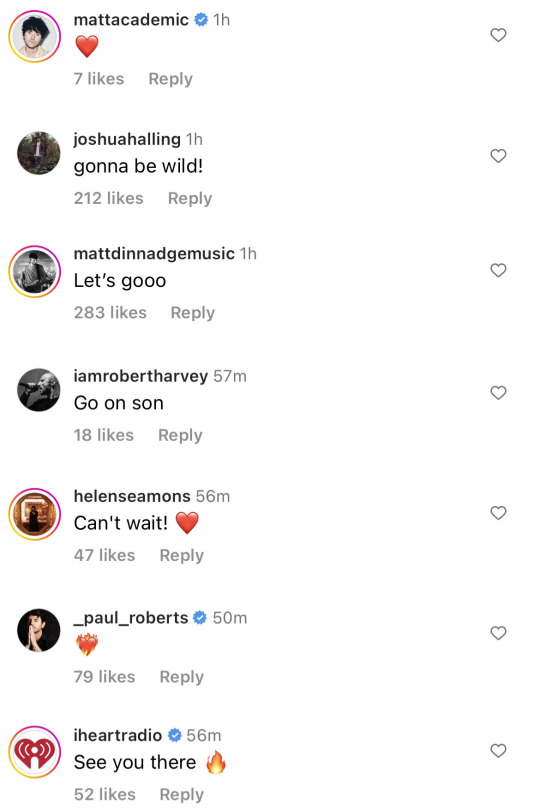

comments on Louis’ US tour opener post 24/4/23
#louis’ insta#fitf tour us#comments#24.04.23#the snuts#snarls#the academic#giant rooks#andrew cushin#joshua halling#matt dinnadge#robert harvey#helen seamons#paul roberts#iheart radio#abbie mccarthy#tour openers#lt team#louis’ band#lt collaborators
96 notes
·
View notes
Note
Do you do research? :) I work on japanese rn (theoretical stuff, mostly phonology)
currently yes! i'm working on a particular intersection of historical linguistics/morphology/discourse, but i don't want to get language-specific because i enjoy the semblance of anonymity here and it's a pretty small field.
#ditching it soon (at least professionally) for a non-academic life#however i have promised colleagues that they can keep me as their pet independent researcher for collaboration
47 notes
·
View notes
Text
Heartbroken but emotions are hard so I guess I’ll jack off
#nothing horrible just complete academic disaster#someone threw out the samples for the project that is the culmination of all of my education up until this point#respresenting significant collaboration#14 weeks of work#and dozens of hours#and they just chucked them in the trash
5 notes
·
View notes
Text
imagine: professor utonium mentoring dexter vs professor membrane mentoring mandark
#dexter & mandark are the only two kids in their district to qualify for some young scholar program & arr bussed off to take classes from#their assigned mentor once or twice a week.#dexter is at odds with himself about it at first. on one hand he's glad that his intelligence is finally being appreciated & nurtured in#some official capacity. let alone by a mind as lauded as the creator of the powerpuff girls. but on the other hand he would prefer to just#move on up to taking college courses entirely rather than have to go through this half measure. & he also gets a little disillusioned with#utonium when he realizes 1) that pretty much everything utonium is famous for was invented by accident including the ppg#& 2) outside of the ppg utonium hasn't achieved much more than dexter himself already has#meanwhile mandark practically kisses the ground that membrane walks on because he's so glad someone in his life recognize's his potential#& membrane sort of sees mandark as the son he wishes dib could be. he's never very open or affectionate about it though because y'know.#it's membrane#he never talks about his kids & sees them so rarely that mandark didn't even realize he had children of his own until like 3½ months into it#whereas utonium cannot shut up about his girls. nor would dexter want him to since they seem to be the most interesting thing about the man#utonium realizes pretty quickly that dexter doesn't need academic guidance so much as he needs social interaction with 1) people who won't#bully or belittle him for being who he is & 2) children his own age. so he starts subtlety encouraging his daughters to meet & befriend him.#I imagine that they come to visit him during his office hours regularly anyways so this happens pretty naturally.#also I think that even though utonium & membrane would definitely respect one another & collaborate well in a professional sense they don't#really mesh personality wise. utonium finds membrane to be far too cold & callous.#membrane thinks that utonium is basically a baby man who doesn't hold himself the way an accomplished man of science should.#ppg#powerpuff girls#the powerpuff girls#dexter's laboratory#dexter's lab#invader zim#headcanon#au#professor utonium#professor membrane#dexter mcpherson#(why is that his fanon last name again? where did that come from)
10 notes
·
View notes
Photo
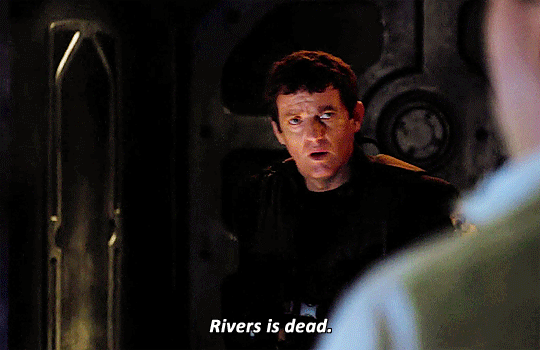
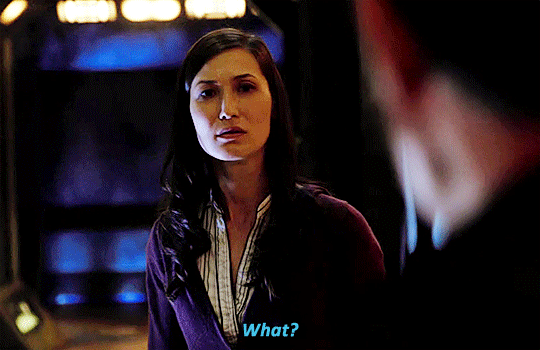
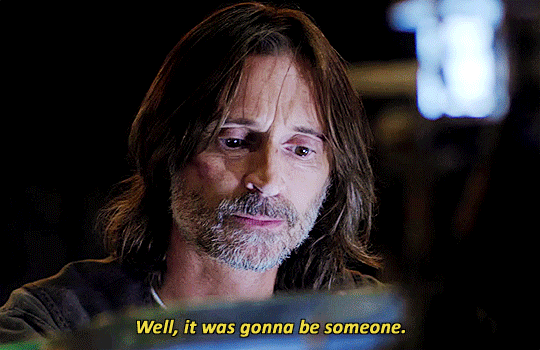

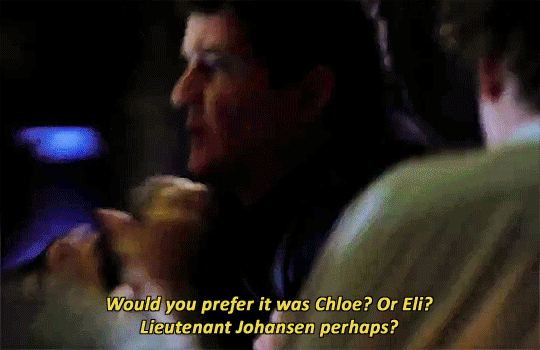
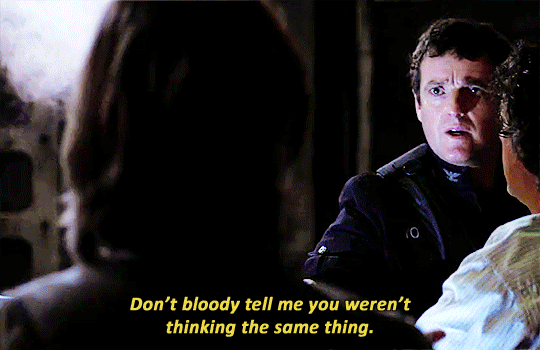
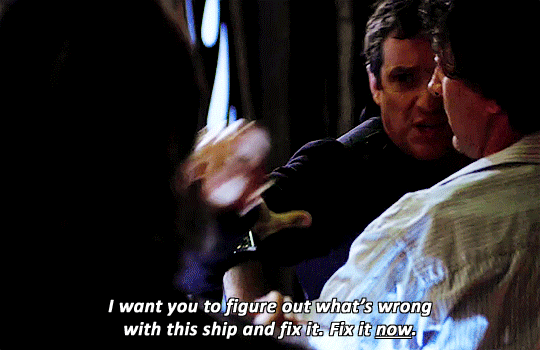
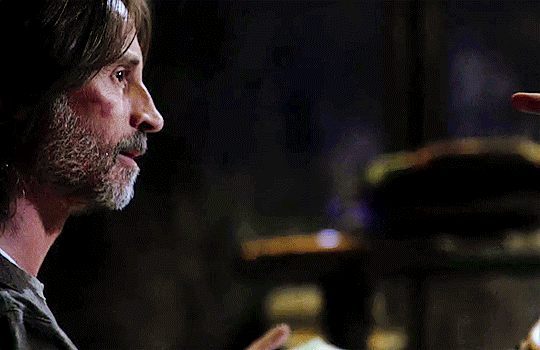
#stargateuniverseedit#stargateedit#Stargate Universe#Everett Young#Nicholas Rush#Young always trying to strangle him he's just like me fr#gotta love how this makes everyone go 'well Rush was the absolute worst for ten episodes but then stuff happened and we all had to come#together to collaborate maybe he has mellowed now maybe he'll finally give in to this found family thing maybe we're witnessing the birth#of a whole new Rush' only for this scene to go naahh just kidding it's the same Rush we always had#saddest thing is that academics truly be like that at times I've been on the receiving end of this before
72 notes
·
View notes
Text
3 Questions: Bridging anthropology and engineering for clean energy in Mongolia
New Post has been published on https://thedigitalinsider.com/3-questions-bridging-anthropology-and-engineering-for-clean-energy-in-mongolia/
3 Questions: Bridging anthropology and engineering for clean energy in Mongolia
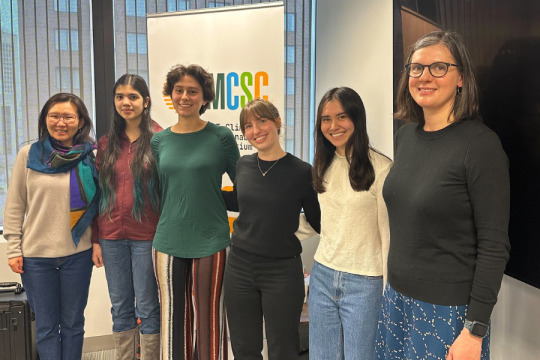

In 2021, Michael Short, an associate professor of nuclear science and engineering, approached professor of anthropology Manduhai Buyandelger with an unusual pitch: collaborating on a project to prototype a molten salt heat bank in Mongolia, Buyandelger’s country of origin and place of her scholarship. It was also an invitation to forge a novel partnership between two disciplines that rarely overlap. Developed in collaboration with the National University of Mongolia (NUM), the device was built to provide heat for people in colder climates, and in places where clean energy is a challenge.
Buyandelger and Short teamed up to launch Anthro-Engineering Decarbonization at the Million-Person Scale, an initiative intended to advance the heat bank idea in Mongolia, and ultimately demonstrate its potential as a scalable clean heat source in comparably challenging sites around the world. This project received funding from the inaugural MIT Climate and Sustainability Consortium Seed Awards program. In order to fund various components of the project, especially student involvement and additional staff, the project also received support from the MIT Global Seed Fund, New Engineering Education Transformation (NEET), Experiential Learning Office, Vice Provost for International Activities, and d’Arbeloff Fund for Excellence in Education.
As part of this initiative, the partners developed a special topic course in anthropology to teach MIT undergraduates about Mongolia’s unique energy and climate challenges, as well as the historical, social, and economic context in which the heat bank would ideally find a place. The class 21A.S01 (Anthro-Engineering: Decarbonization at the Million-Person Scale) prepares MIT students for a January Independent Activities Period (IAP) trip to the Mongolian capital of Ulaanbaatar, where they embed with Mongolian families, conduct research, and collaborate with their peers. Mongolian students also engaged in the project. Anthropology research scientist and lecturer Lauren Bonilla, who has spent the past two decades working in Mongolia, joined to co-teach the class and lead the IAP trips to Mongolia.
With the project now in its third year and yielding some promising solutions on the ground, Buyandelger and Bonilla reflect on the challenges for anthropologists of advancing a clean energy technology in a developing nation with a unique history, politics, and culture.
Q: Your roles in the molten salt heat bank project mark departures from your typical academic routine. How did you first approach this venture?
Buyandelger: As an anthropologist of contemporary religion, politics, and gender in Mongolia, I have had little contact with the hard sciences or building or prototyping technology. What I do best is listening to people and working with narratives. When I first learned about this device for off-the-grid heating, a host of issues came straight to mind right away that are based on socioeconomic and cultural context of the place. The salt brick, which is encased in steel, must be heated to 400 degrees Celsius in a central facility, then driven to people’s homes. Transportation is difficult in Ulaanbaatar, and I worried about road safety when driving the salt brick to gers [traditional Mongolian homes] where many residents live. The device seemed a bit utopian to me, but I realized that this was an amazing educational opportunity: We could use the heat bank as part of an ethnographic project, so students could learn about the everyday lives of people — crucially, in the dead of winter — and how they might respond to this new energy technology in the neighborhoods of Ulaanbaatar.
Bonilla: When I first went to Mongolia in the early 2000s as an undergraduate student, the impacts of climate change were already being felt. There had been a massive migration to the capital after a series of terrible weather events that devastated the rural economy. Coal mining had emerged as a vital part of the economy, and I was interested in how people regarded this industry that both provided jobs and damaged the air they breathed. I am trained as a human geographer, which involves seeing how things happening in a local place correspond to things happening at a global scale. Thinking about climate or sustainability from this perspective means making linkages between social life and environmental life. In Mongolia, people associated coal with national progress. Based on historical experience, they had low expectations for interventions brought by outsiders to improve their lives. So my first take on the molten salt project was that this was no silver bullet solution. At the same time, I wanted to see how we could make this a great project-based learning experience for students, getting them to think about the kind of research necessary to see if some version of the molten salt would work.
Q: After two years, what lessons have you and the students drawn from both the class and the Ulaanbaatar field trips?
Buyandelger: We wanted to make sure MIT students would not go to Mongolia and act like consultants. We taught them anthropological methods so they could understand the experiences of real people and think about how to bring people and new technologies together. The students, from engineering and anthropological and social science backgrounds, became critical thinkers who could analyze how people live in ger districts. When they stay with families in Ulaanbaatar in January, they not only experience the cold and the pollution, but they observe what people do for work, how parents care for their children, how they cook, sleep, and get from one place to another. This enables them to better imagine and test out how these people might utilize the molten salt heat bank in their homes.
Bonilla: In class, students learn that interventions like this often fail because the implementation process doesn’t work, or the technology doesn’t meet people’s real needs. This is where anthropology is so important, because it opens up the wider landscape in which you’re intervening. We had really difficult conversations about the professional socialization of engineers and social scientists. Engineers love to work within boxes, but don’t necessarily appreciate the context in which their invention will serve.
As a group, we discussed the provocative notion that engineers construct and anthropologists deconstruct. This makes it seem as if engineers are creators, and anthropologists are brought in as add-ons to consult and critique engineers’ creations. Our group conversation concluded that a project such as ours benefits from an iterative back-and-forth between the techno-scientific and humanistic disciplines.
Q: So where does the molten salt brick project stand?
Bonilla: Our research in Mongolia helped us produce a prototype that can work: Our partners at NUM are developing a hybrid stove that incorporates the molten salt brick. Supervised by instructor Nathan Melenbrink of MIT’s NEET program, our engineering students have been involved in this prototyping as well.
The concept is for a family to heat it up using a coal fire once a day and it warms their home overnight. Based on our anthropological research, we believe that this stove would work better than the device as originally conceived. It won’t eliminate coal use in residences, but it will reduce emissions enough to have a meaningful impact on ger districts in Ulaanbaatar. The challenge now is getting funding to NUM so they can test different salt combinations and stove models and employ local blacksmiths to work on the design.
This integrated stove/heat bank will not be the ultimate solution to the heating and pollution crisis in Mongolia. But it will be something that can inspire even more ideas. We feel with this project we are planting all kinds of seeds that will germinate in ways we cannot anticipate. It has sparked new relationships between MIT and Mongolian students, and catalyzed engineers to integrate a more humanistic, anthropological perspective in their work.
Buyandelger: Our work illustrates the importance of anthropology in responding to the unpredictable and diverse impacts of climate change. Without our ethnographic research — based on participant observation and interviews, led by Dr. Bonilla, — it would have been impossible to see how the prototyping and modifications could be done, and where the molten salt brick could work and what shape it needed to take. This project demonstrates how indispensable anthropology is in moving engineering out of labs and companies and directly into communities.
Bonilla: This is where the real solutions for climate change are going to come from. Even though we need solutions quickly, it will also take time for new technologies like molten salt bricks to take root and grow. We don’t know where the outcomes of these experiments will take us. But there’s so much that’s emerging from this project that I feel very hopeful about.
#ADD#air#amazing#Anthropology#approach#bank#Building#challenge#change#Children#Classes and programs#clean energy#climate#climate change#coal#collaborate#Collaboration#Companies#course#creators#decarbonization#Design#Developing countries#driving#economic#economy#education#Education#teaching#academics
2 notes
·
View notes
Note
Is Mona Baker's anti-semitism in reference to her support of palestine or is there something I'm missing
Have you seen her twitter account lately lmao
#Like the fact that she fired Israeli scholars and refuses to work with them is already questionable imo since these people were not#affiliated with their government and were judged entirely by their nationality#But I actually had to unfollow her twitter in October or November or so because she posted some incredibly tasteless#And in my opinion antisemitic things#The scholarly boycott thing is questionable because it goes against the thought of academic collaboration#And reveals an absolute double standard#Imagine I had an academic journal and fired every single British scholar because I don't agree with their government and refused to ever#work with a Brit again because of their transphobic legislation and colonialism#I'd be laughed at#So that part is not exactly antisemitic but definitely silly imo like what is it even achieving#But her twitter account has really been something lately#I haven't checked since I unfollowed her though#I love how you immediately jumped to making it about her support of Palestine though
14 notes
·
View notes